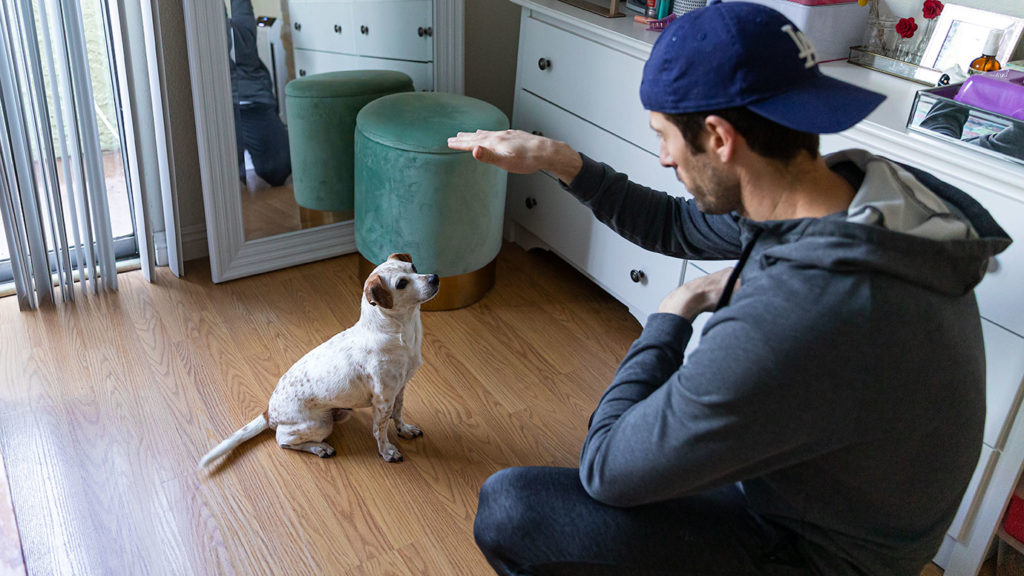
The reality of Safer at Home is that if you’re a dog owner, you’ve probably been seeing a lot more of your dog(s) lately. This facetime with Fido comes with a few challenges, but many more opportunities. We can get to know our dogs, bond with them, train them, and work with them to develop long-lasting changes.
To provide insight, We Like L.A. spoke with two Los Angeles-based dog behaviorists about the basics of dog training, special considerations for those who have had their routines upended, and some specifics on how to work with your dog given that we’re all spending a lot more time together.
Build Trust as a Foundation

The thing you need to know about dogs is that they, perhaps more than any other animal, have an intuitive ability to understand humans. This pathway to understanding can work both ways.
“Dogs have evolved over thousands of years to be these amazing interspecies communicators,” Kate McGuire tells We Like L.A. McGuire has been training dogs professionally for over 13 years and currently teaches the Mutt Manners classes at Wallis Annenberg PetSpace.
Trust with your dogs, like in any relationship, is about expectation and consistency. Once a dog comes to know and expect you as their companion and caretaker, it sets the groundwork for everything else, whether it’s training a fearful dog for behavioral changes or enriching the bond between human and pet.
Develop Confidence Through Routine
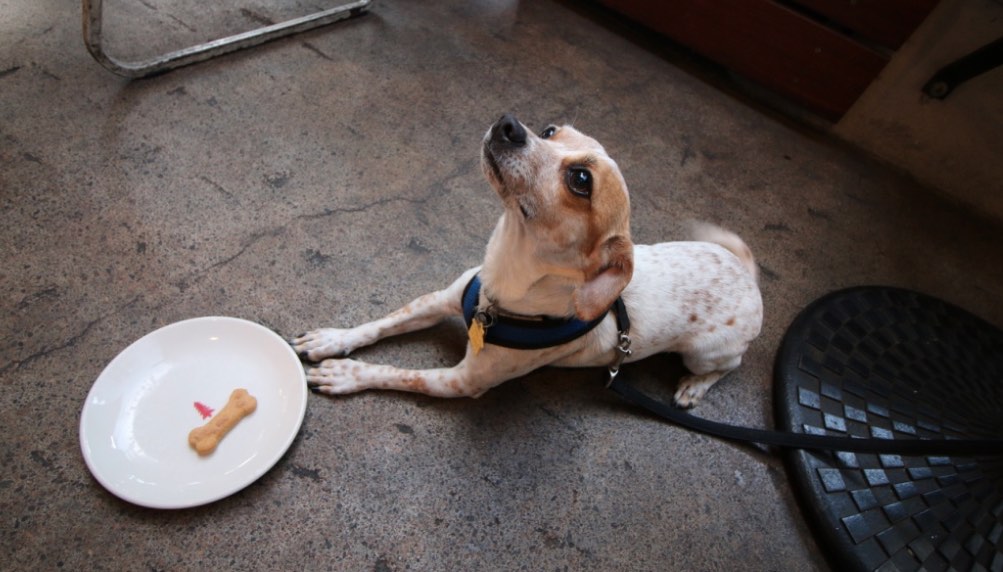
So what’s the best way to build consistency? With dogs, it’s all about routine.
Fernando Diaz, Behavior & Training Manager at the Pasadena Humane Society & SPCA, explains that routines are really the building blocks of a well-behaved dog. The more we can control our dog’s environment and routine, the more we can set them up for success.
“There are a lot of simple things you can do where you can give some consistency, give a routine, give energy release, in relatively restrained environments,” Diaz says.”The best thing I can recommend is creating a consistent, solid routine where your dog knows what’s coming next.”
How might this play out?
Consider getting up at the same time every day and following a set protocol that your dog can rely on. This means showering at the same time, getting dressed at the same time, feeding at the same time, and going on walks at the same time. As your dog begins to expect and anticipate your behavior, they are put more at ease. Ironically, it might be good for us humans, too.
So many people have had their entire lives upended over the past few months. Building a new, trusted routine could be an anchor to latch onto amidst all the chaos. This goes for both humans and dogs.
Get Creative While Social Distancing
Social distancing is the reality we all face right now. When it comes to how we interact with our dogs, it presents both challenges and opportunities.
“It all massively depends on what life looked like before this,” McGuire explains. “I think a lot of dogs are really, really happy that their people are at home and can spend time with them. But we’re also really limited to what kind of exercise we can give them.”
Part of adapting to these new circumstances is understanding our dog’s uniqueness. Like people, dogs don’t have a uniform personality. They have physical traits and tendencies we should tune in to. If, for example, you have a larger or more energetic breed but live in a modest home, you may have used L.A.’s many dog parks, trails, and green spaces to keep them physically stimulated. Those options are severely limited right now. So how do you adjust? You get creative.
McGuire recently uploaded a tutorial to the PetSpace YouTube channel demonstrating how you could use a regular muffin tin, combined with dog treats and toys, to create a simple puzzle for your dog to solve.
In another of McGuire’s tutorials, she showcases an obstacle course she built for her pups using household objects.
Both examples underscore the importance of giving our dogs mental and physical stimulation when we can’t do what we normally would with them.
Control Your Dog’s Environment
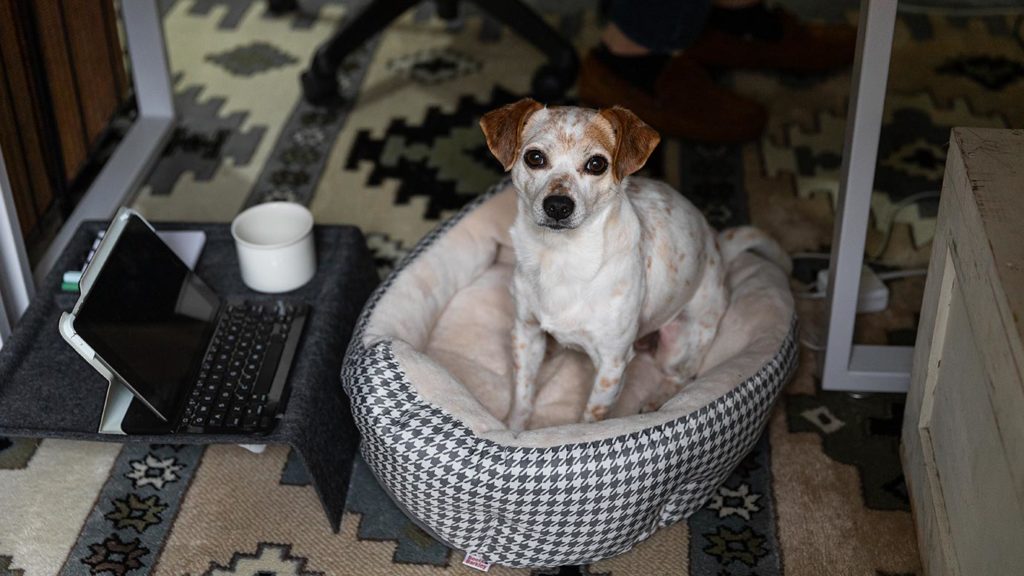
“Animals in general, humans included, feel more confident and comfortable when we have some measure of control over our environment,” Diaz explains.
One upside of being at home more often (or all the time as we are now) is that you have the opportunity to better control your dog’s environment and adjust behavior.
“I think this is a great opportunity, in a lot of ways, for people to work on the house manners with their dog’s environment so they can manage things like counter surfing or stealing things off the coffee table,” McGuire says. “We have a lot more ability to control situations because nobody’s going anywhere.”
One specific ability that you can actually work on effectively while inside is walking on a leash.
“People think that all loose-leash walking needs to be done outside on walks, but actually teaching the fundamentals of how to perfectly walk on a leash is best done indoors without any distractions. And then if you have a yard, going out to your yard,” McGuire points out.
Whatever behavior you’re trying to build, just remember that you have a big advantage because you’re now home most of the time to control the environment.
Plan Time Apart
An independent dog is usually a happier dog, in so much as they are more relaxed and at ease when not in the presence of their human companions. To achieve this, McGuire likes to focus on something she calls ‘downtime.’
“I like to structure things so that we have playtime, training time, enrichment time, and we also have downtime,” McGuire explains. “If they’re used to us being gone all day, we come home and they’re so excited to see us [that] they don’t give us that much downtime. Sometimes they have to actually learn that.”
Downtime could be when you’re in the same room sitting quietly together, or you could provide activities that your dog can do on its own.
In one example, Diaz described how he leaves scent trails around the house, essentially dropping bits of kibble in hidden spots that his dogs search for while he’s at his computer getting work done. They get treats and he’s more productive. It’s a win-win.
By providing these enrichment activities where the dog is not demanding your attention, it reinforces the idea that being apart (even if it’s just in another room) can be a good thing.
Start With Basics
McGuire recommends working first on basic commands that other behaviors can be built upon: sit, down, stay, and come-when-called. She also encourages owners to work on loose-leash walking, especially within the confines of home, without distractions.
Once you see progress in these basic commands, you can begin to work on more novel tricks, like shake (giving a paw), spin, or touch (having them use their nose to hit your hand as a target). Generally, the more advanced you can get with the commands you teach, the more fun it is for both dog and owner. And fun is what it’s all about!
Keep Sessions Short
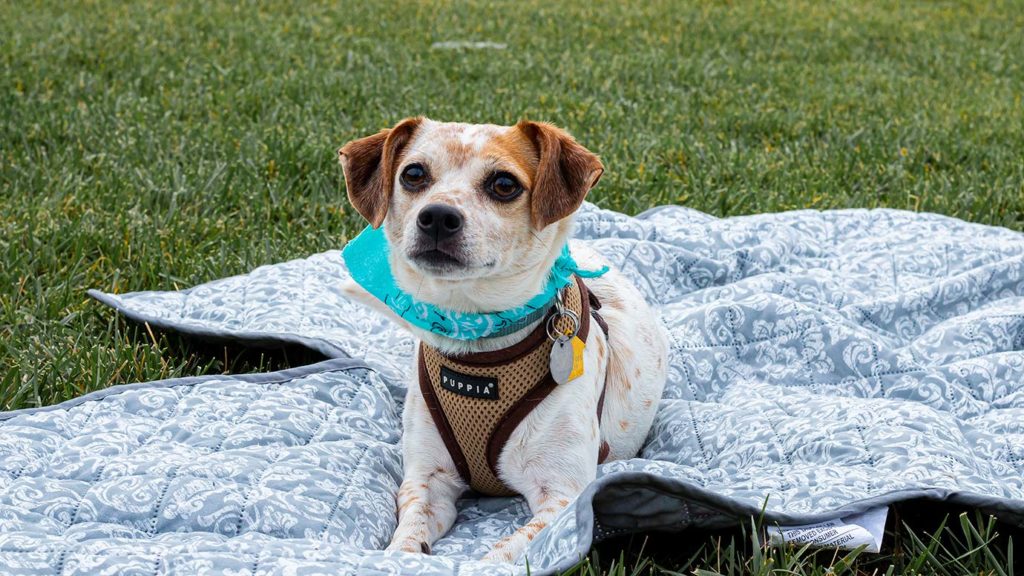
The nice thing about enrichment training for dogs is that it’s not as labor-intensive as you might think.
“For your average dog, especially if they have not been through any special training, two to three minutes is a huge amount of time,” Diaz tells us.
With such a low bar, there a lot of ways to incorporate training into your day-to-day schedule. It could be as simple as practicing ‘sits’ or ‘leave-its’ while you’re microwaving your lunch. Or you can turn your walks into training sessions, noticing positive behaviors, then reinforcing them with treats or rewards.
For meals, Diaz recommends using some kind of feeder toy to challenge and stimulate your dog.
“That can be as complex as things like I.Q. balls or other store-bought toys. Or it could be something simple like taking a toilet paper roll and squeezing off the ends and filling it with food,” he says.
The goal isn’t to get a dog to do a specific behavior every single time, but to make sure they’re getting some sort of mental stimulation through the activity.
“When you’re trying for confidence building, when you’re training for enrichment, it actually doesn’t matter if the dog learns what you’re trying to teach them,” Diaz tells us. “What matters is, ‘are they thinking, are they trying things?'”
McGuire sums it up: “Start small and make it fun. Make it easy and train in five-minute sessions or less.”
Plan for Disruptions
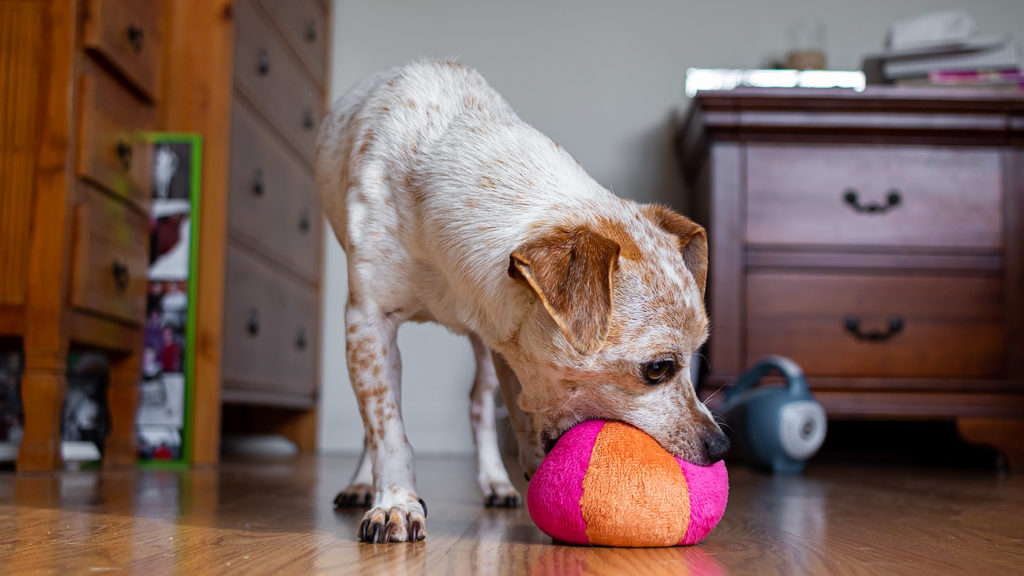
Dog-owners and dogs could be in for a second wave of disruption in the coming months, assuming many of us return to work in offices. That presents another challenge, as our dogs may have gotten used to the stay-at-home routine. Any disruption could cause them to act out.
Thankfully, helping them maintain independence while you’re home (using some of the techniques outlined above) is a great start. Also, if your dog suffers from some type of separation anxiety, now might be the best time to work on that.
“The best separation anxiety protocols that exist out there start with really not leaving that much and working on building this lovely trust [that] you’ll come back and it’s not something to worry about,” McGuire says. “If that’s an issue that already exists, you can actually work on it really effectively at this time.”
Owners should know that not all anxiety is true separation anxiety, but rather what Diaz calls transitional anxiety. Dogs panic when they’re thrown into a new routine because they don’t know what’s coming next. This materializes in destructive behaviors, like chewing on furniture or urinating in the house. Fortunately, most dogs can adapt in a relatively short amount of time.
“The nice thing about transitional anxiety versus true separation anxiety is transitional anxiety goes away,” Diaz says.
The key is to build up a new sense of consistency and new routines that help them accept that this is the new normal. In a lot of ways, it’s not unlike how people have had to adapt to COVID-19 and social restrictions.
Leverage Online Resources
We’ve covered a lot here. Certainly, you’re going to have questions and you’re going to want specific exercises you can do if you’re looking to teach your dog specific behaviors or tricks. Here are a few resources recommended by our experts:
- Wallis Annenberg PetSpace is producing a series of short YouTube videos with quick tips on enrichment activities you can do at home with your dog. Visit their channel here.
- Diaz highly recommends the YouTube channel Kikopup, which features videos by dog trainer Emily Larlham (we embedded a few in the article above). Videos cover everything from basic sits and stays to more advanced tricks and specific behavioral training techniques. To date, this channel has racked up more than 30 million views.
- Diaz will be offering an interactive webinar on April 15 called Social Distancing With Fido. Registration is available through the Pasadena Humane Society website.
On Fostering a Dog During ‘Safer at Home’
Fostering a pet can be a great way to give back, even as we’re all severely limited in what we can do and where we can go. Specifically, it’s important to lower the number of animals currently in shelters so that workers can remain home as opposed to going to the facility to care for them.
If you’d like to know more about local fostering programs, you can visit the Los Angeles County Animal Care & Control website. The Pasadena Humane Society also has its own fostering program.
advertisements
